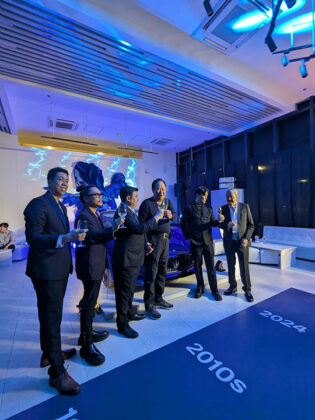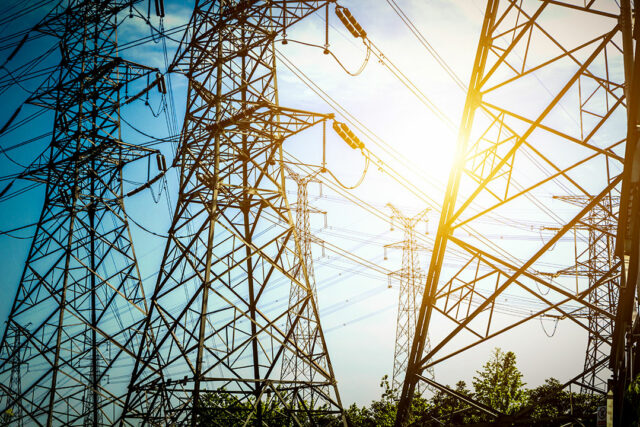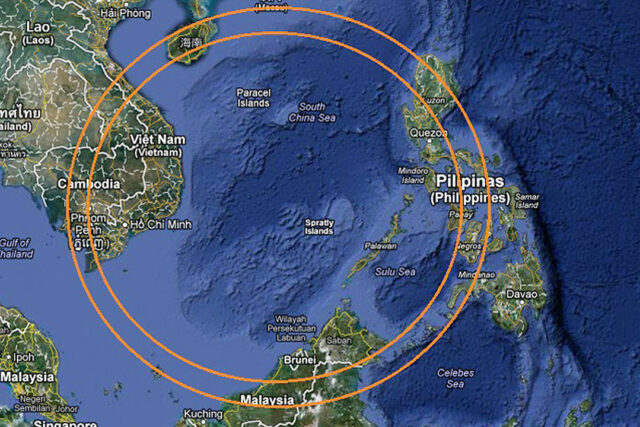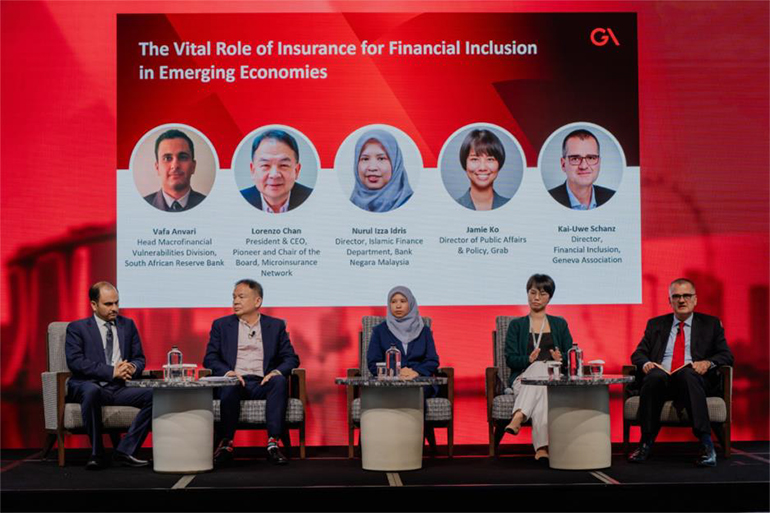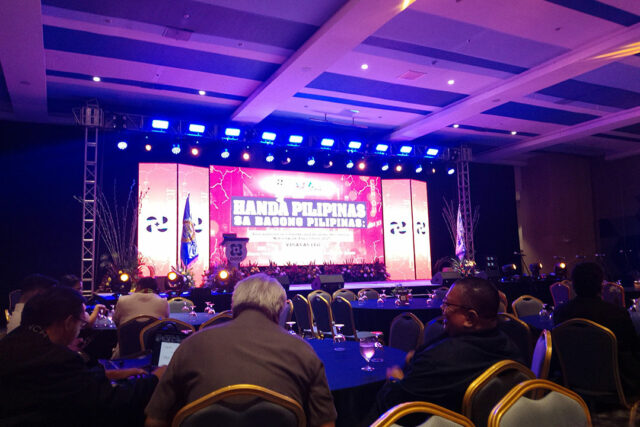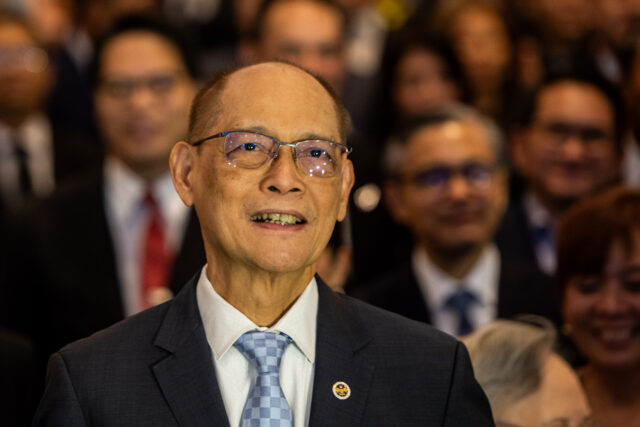BEIJING/SINGAPORE — China’s state-owned defense giant Norinco in February unveiled a military vehicle capable of autonomously conducting combat-support operations at 50 kilometers per hour. It was powered by DeepSeek, the company whose artificial intelligence (AI) model is the pride of China’s tech sector.
The Norinco P60’s release was touted by Communist Party officials in press statements as an early showcase of how Beijing is using DeepSeek and AI to catch up in its arms race with the United States, at a time when leaders in both countries have urged their militaries to prepare for conflict.
A Reuters review of hundreds of research papers, patents and procurement records gives a snapshot of the systematic effort by Beijing to harness AI for military advantage.
Specifics of how the systems behind China’s next-generation weapons work and the extent to which it has deployed them are a state secret, but procurement records and patents offer clues into Beijing’s progress toward capabilities like autonomous target recognition and real-time battlefield decision support in a way that mirrors US efforts.
Reuters couldn’t establish if all the products had been built and patents don’t necessarily indicate operational technology.
The People’s Liberation Army (PLA) and affiliates continue to use and look for Nvidia chips, including models under US export controls, according to the papers, tenders and patents.
Reuters could not determine if those chips were stockpiled before Washington imposed restrictions as the documents do not detail when the hardware used was exported. Patents filed as recently as June show their use by military-linked research institutes. In September 2022, the US Commerce Department banned exports to China of Nvidia’s popular A100 and H100 chips.
Nvidia spokesman John Rizzo said in a statement to Reuters that while the firm can’t track individual resales of previously sold products, “recycling small quantities of old, second-hand products doesn’t enable anything new or raise any national security concern. Using restricted products for military applications would be a nonstarter, without support, software, or maintenance.”
The US Treasury and Commerce Department did not respond to questions about Reuters’ findings.
The Chinese military has also in 2025 increased its use of contractors that claim to exclusively use domestically-made hardware like Huawei AI chips, said Sunny Cheung, a fellow at the Washington-based Jamestown Foundation defense policy think-tank, who analyzed several hundred tenders issued from the PLA Procurement Network over six months this year.
Reuters couldn’t independently confirm his assertion, but the shift would coincide with a public pressure campaign by Beijing on domestic firms to use China-made technology.
The news agency’s review of procurement notices and patents filed to China’s patent office found demand for and use of Huawei chips by PLA affiliates, but it was not able to verify all the tenders seen by Jamestown, which is releasing a report this week that it provided early to Reuters.
Huawei declined to comment when asked about military deployment of its chips. The Chinese defense ministry, DeepSeek, and Norinco did not return requests for comment about their use of AI for military applications. The universities and defense firms that filed the patents and research papers seen by Reuters also did not respond to similar questions.
DEEPSEEK DEPENDENCE
Usage of DeepSeek models was indicated in a dozen tenders from PLA entities filed this year and seen by Reuters, while just one referenced Alibaba’s Qwen, a major domestic rival.
Alibaba didn’t return a request for comment about military use of Qwen.
DeepSeek-related procurement notices have accelerated throughout 2025, with new military applications appearing regularly on the PLA network, according to Jamestown.
DeepSeek’s popularity with the PLA also reflects China’s pursuit of what Beijing calls “algorithmic sovereignty” — reducing dependence on Western technology while strengthening control over critical digital infrastructure.
The US Department of Defense declined to comment on the PLA’s use of AI.
A State Department spokesperson said in response to Reuters’ questions that “DeepSeek has willingly provided, and will likely continue to provide, support to China’s military and intelligence operations.”
Washington will “pursue a bold, inclusive strategy to American AI technology with trusted foreign countries around the world, while keeping the technology out of the hands of our adversaries,” the spokesperson added.
AI-POWERED PLANNING AND APPLICATIONS
China is looking at AI-powered robot dogs that scout in packs and drone swarms that autonomously track targets, as well as visually immersive command centers and advanced war game simulations, according to the documents.
In November 2024, the PLA issued a sci-fi-esque tender for AI-powered robot dogs that would scout together for threats and clear explosive hazards.
Reuters couldn’t identify if the tender was fulfilled. China has previously deployed armed robot dogs from AI robotics manufacturer Unitree in military drills, according to images released in state media.
Unitree didn’t respond to queries about its PLA work.
The review of patents, tenders and research papers published in the past two years shows how PLA and affiliated entities are looking to AI to improve military planning, including developing technology to quickly analyze images taken by satellites and drones.
Researchers at Landship Information Technology, a Chinese company that integrates AI systems into military vehicles including Norinco’s, said in a February white paper released to promote their services that its technology built on Huawei chips can rapidly identify targets from satellite imagery, while coordinating with radars and aircraft to execute operations.
The time taken for military planners to shift from finding and identifying a target to executing an operation has also been shortened by AI, according to Xi’an Technological University.
Researchers at that institute said in a summary of their findings released in May that their DeepSeek-powered system was able to assess 10,000 battlefield scenarios — each with different variables, terrain, and force deployments — in 48 seconds.
Such a task would have taken a conventional team of military planners 48 hours to complete, they said.
Reuters could not independently verify the researchers’ claims.
AUTONOMOUS WEAPONS
Chinese military entities are investing in increasingly autonomous battlefield technology, the documents suggest.
Two dozen of the tenders and patents seen by Reuters show the military attempting to integrate AI into drones so they can recognize and track targets, as well as work together in formations with little human intervention.
Beihang University, known for its military aviation research, is using DeepSeek to improve drone swarm decision-making when targeting “low, slow, small” threats — military shorthand for drones and light aircraft — according to a patent filing this year.
Chinese defense leaders have publicly committed to maintaining human control over weapons systems amid growing concern that a conflict between Beijing and Washington could lead to the unchecked deployment of AI-powered munitions.
The US military, which is also investing in AI, is aiming to deploy thousands of autonomous drones by the end of 2025 in what officials say is an attempt to counter China’s numerical advantage in unmanned aerial vehicles.
US CHIPS, CHINESE MODELS
Chinese defense contractors like Shanxi 100 Trust Information Technology have touted in marketing materials their reliance on domestically produced components like Huawei’s Ascend chips, which allow AI models to operate.
The firm didn’t respond to questions about its relationship with Huawei and the PLA.
Despite the move to domestic processors, Nvidia hardware continues to be frequently cited in research by military-affiliated academics, according to a review of patent filings from the past two years.
Reuters identified 35 applications referencing use of Nvidia’s A100 chips by academics at the PLA’s National University of Defense Technology (NUDT) and at the “Seven Sons” — a group of Chinese universities under US sanctions and with a history of conducting defense-related research for Beijing.
Those entities in the same time period, filed 15 patents related to AI applications that cited Huawei Ascend hardware, which was designed as a substitute for Nvidia chips.
As recently as June, the PLA Rocket Force University of Engineering separately filed a patent for a remote-sensing target detection system, which it said used A100 chips for model training.
Senior Col. Zhu Qichao, who leads a NUDT research center, told Reuters last year that US restrictions have impacted their AI research “to some degree,” though they are determined to narrow the technological gap.
Nvidia’s Mr. Rizzo played down PLA demand for Nvidia’s hardware, saying that China “has more than enough domestic chips for all of its military applications.” — Reuters








